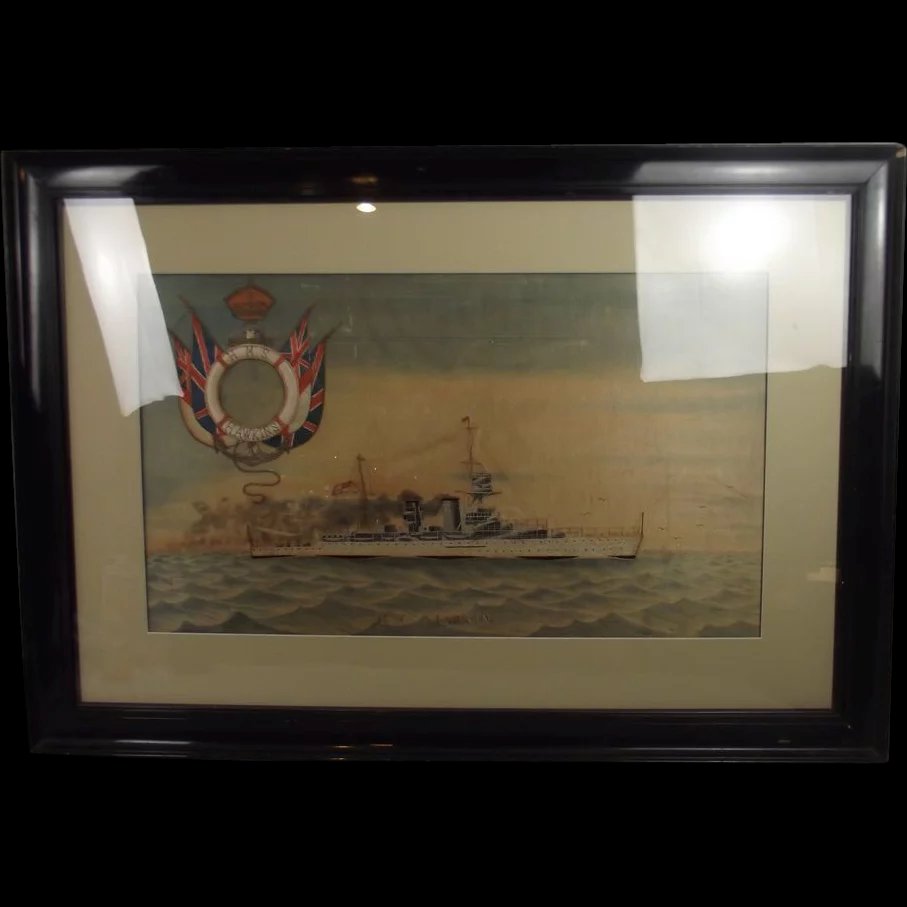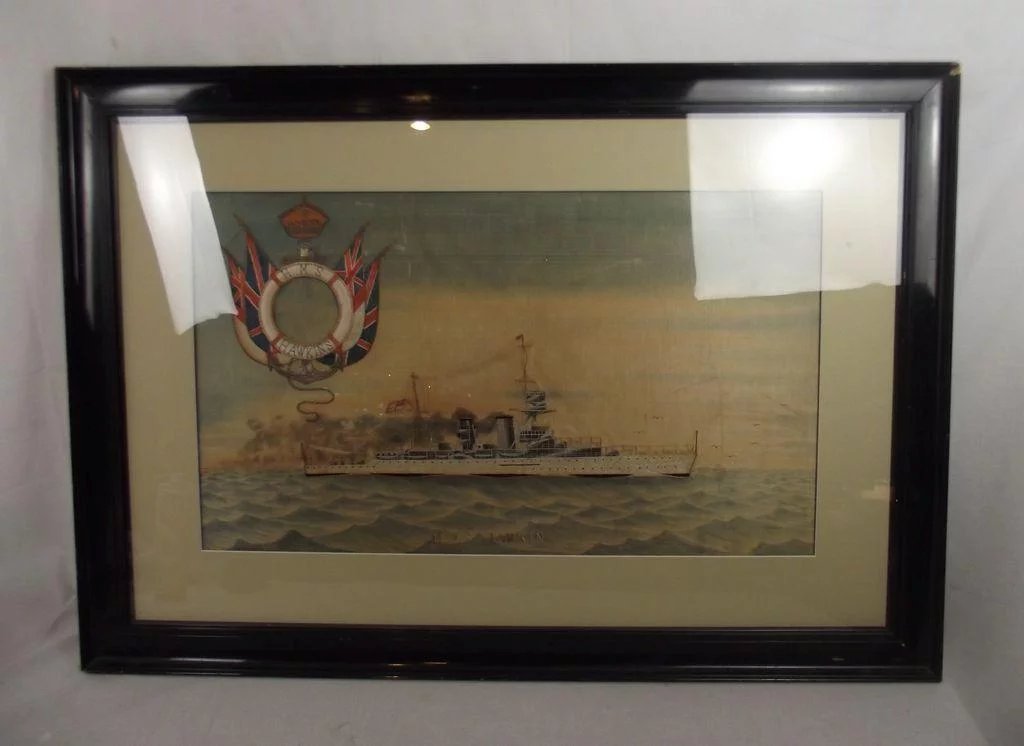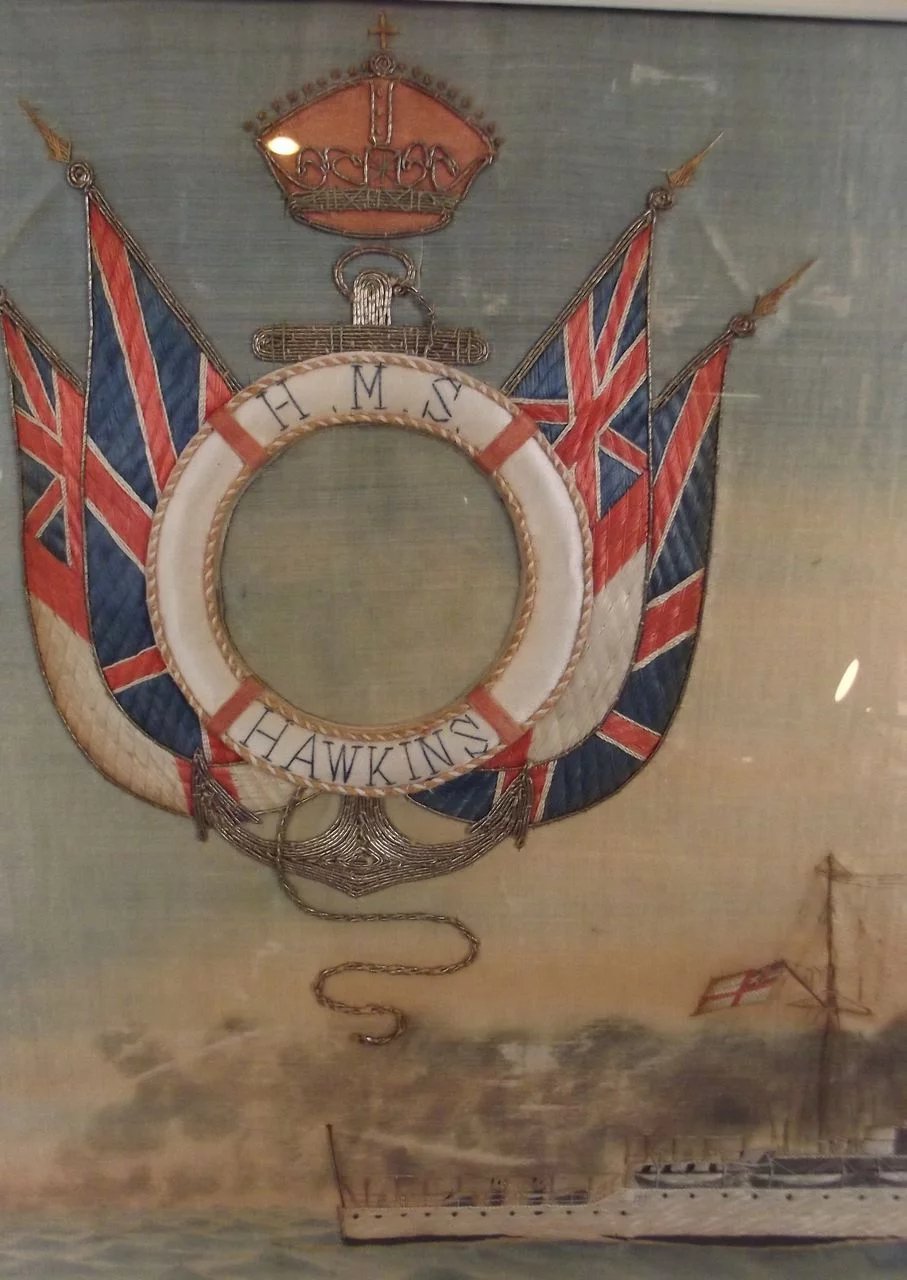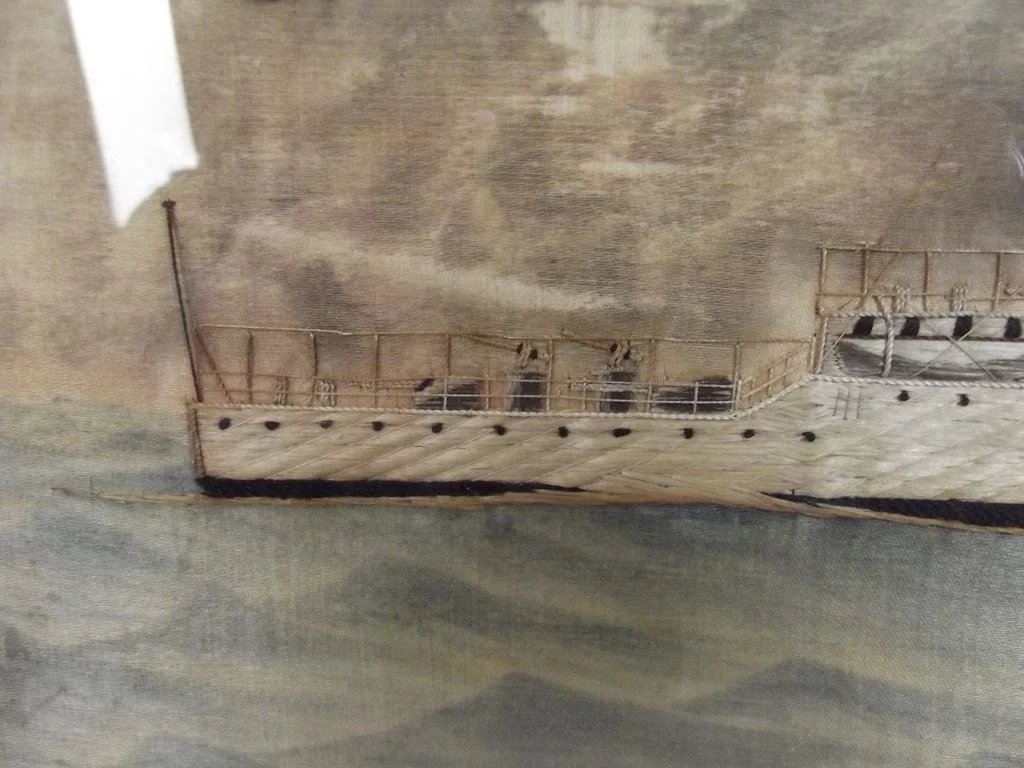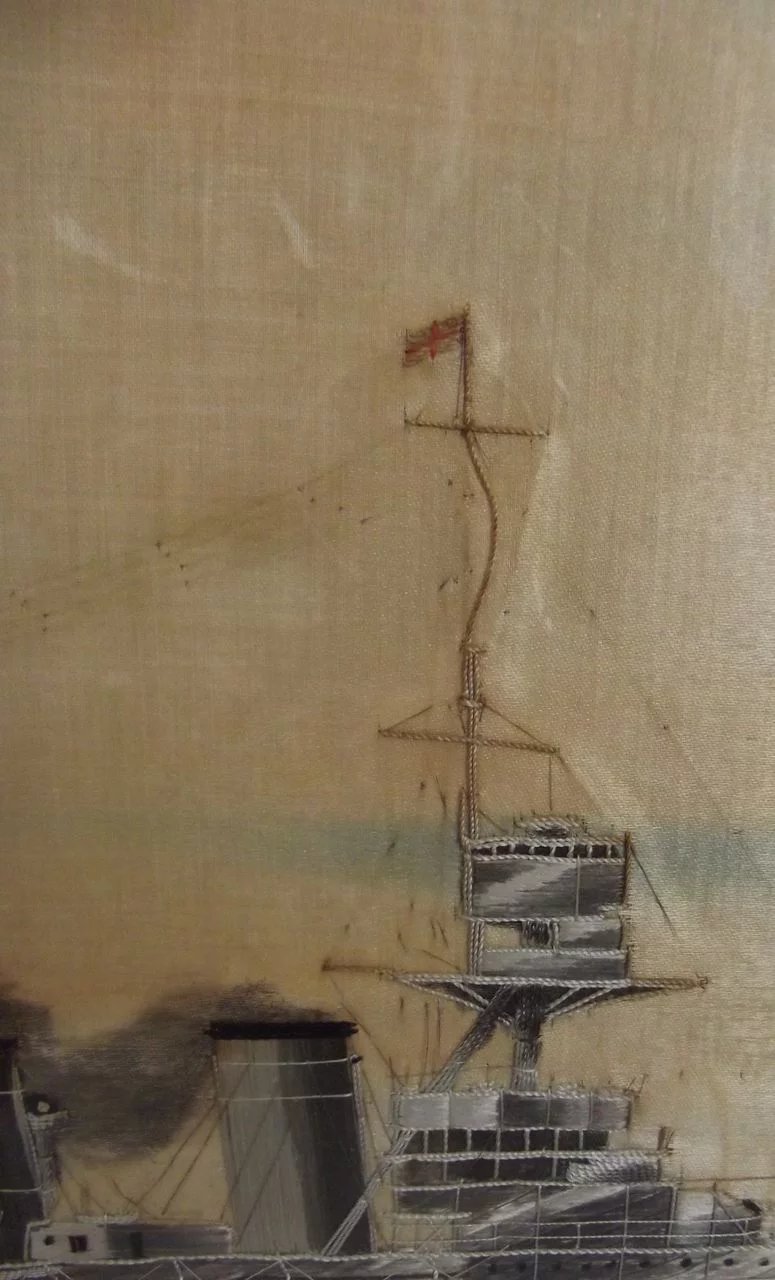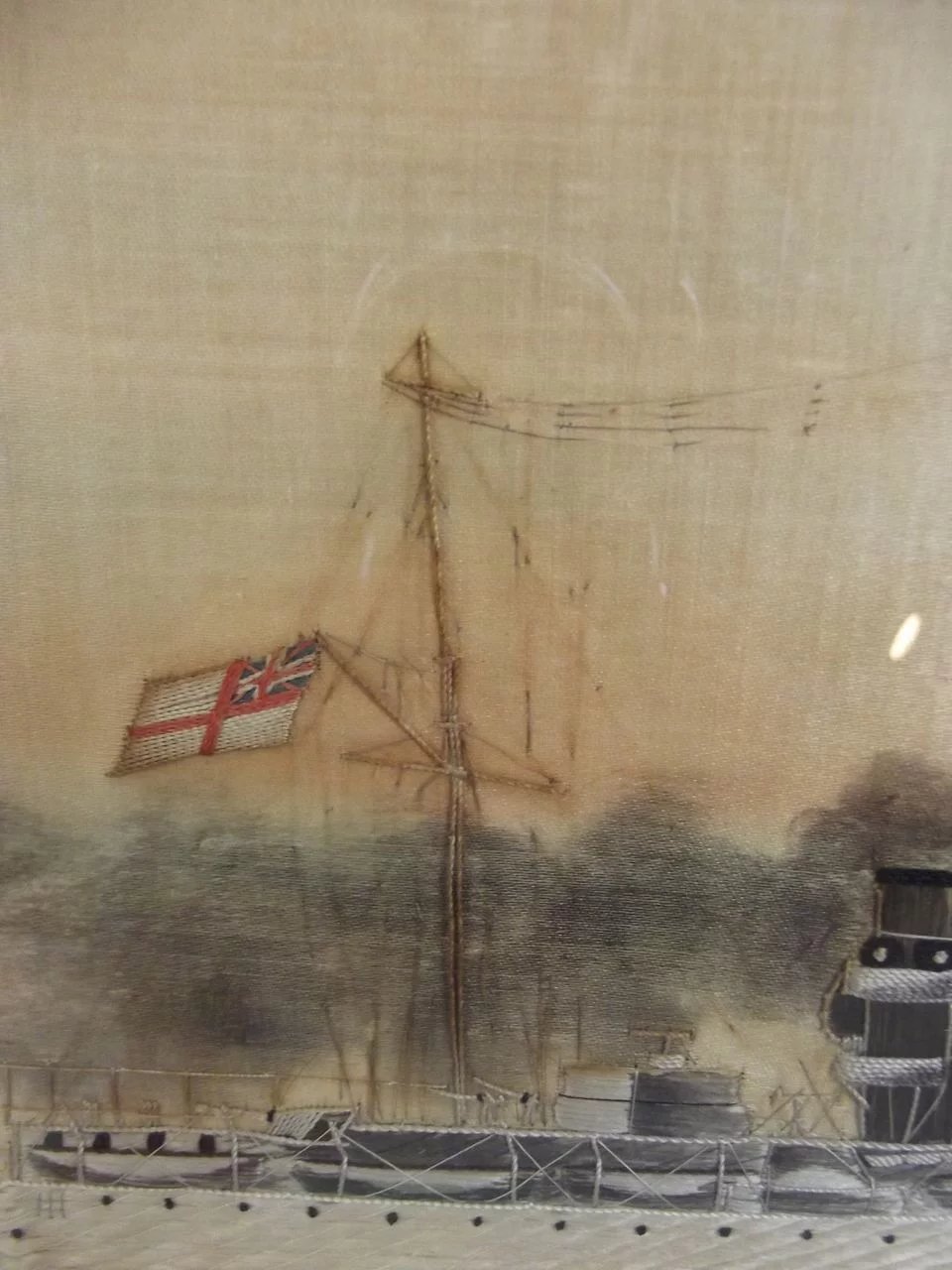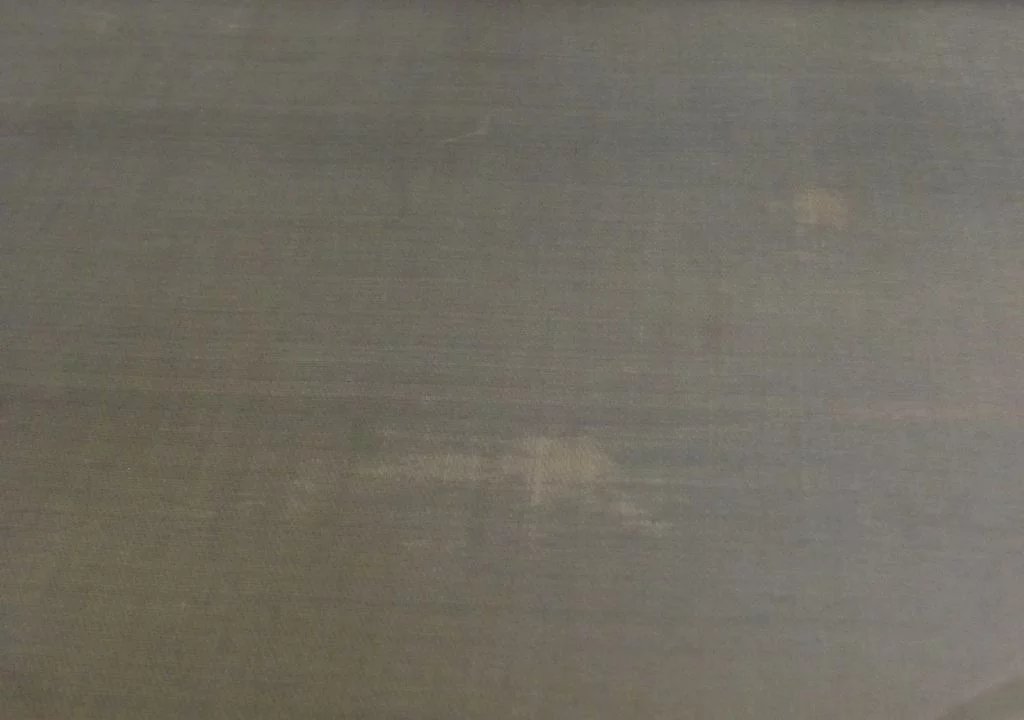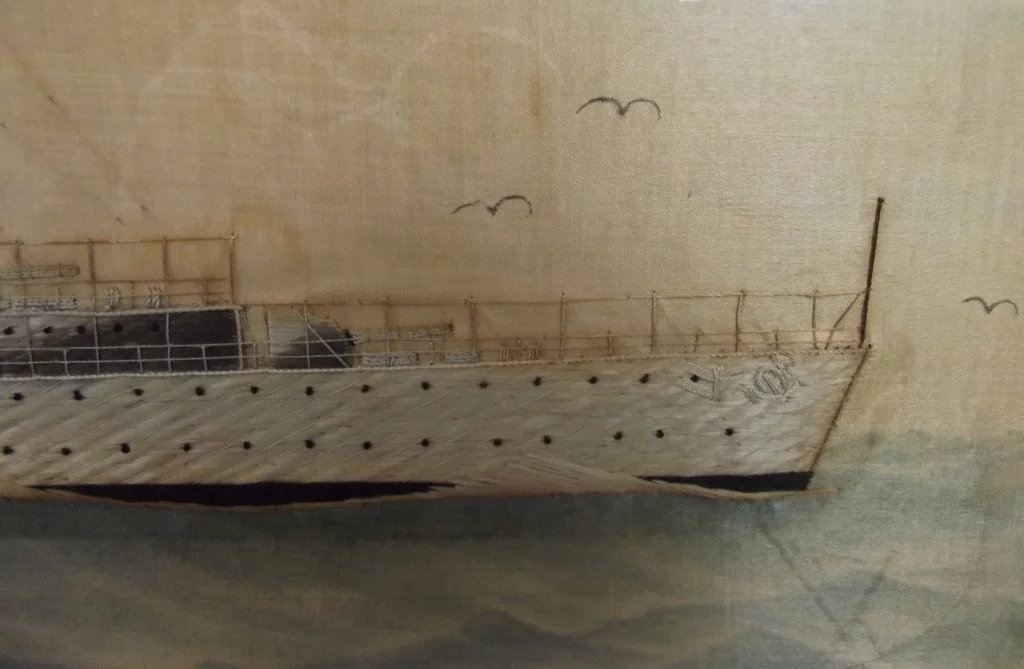~ Silk-work Picture of H.M.S. Hawkins ~
A framed, beautifully crafted silk-work picture of the Hawkins-class heavy cruiser H.M.S. Hawkins at sea.
The picture has a painted silk background with the ship embroidered on top.
This is a very fine piece with several different styles of embroidering and sewing.
To the left hand corner of the picture is an anchor embroidered in silver thread with the Royal crown above, flags either side and a life-ring reading ‘H.M.S. Hawkins’.
The name ‘H.M.S. Hawkins is also sewn below the ship.
To the reverse of the picture is a sticker from a previous gallery and the information ‘H.M.S. Hawkins, Launched 1st October 1917, Commissioned 25th July 1919’.
The picture is mounted in a simple black, single mounted, glazed frame.
~ Dimensions ~
The picture measures 27 ½ inches (70cm) by 16 inches (40.5cm).
The frame measures 38 ½ inches (97.5cm) by 26 ¾ inches (68cm) by 1 ½ inches (4cm). It weighs 5.45Kg.
~ Condition ~
The picture is in great condition with the colours still vibrant. There are a few small areas of wear to the silk and the threads that make up the rigging are lost in parts. The frame is worn, especially on the top right corner.
~ HMS Hawkins ~
HMS Hawkins was a Hawkins-class heavy cruiser of the Royal Navy. She was built at Chatham Dockyard and launched on 1 October 1917.[1] With the conversion of her sister, HMS Cavendish, to become the aircraft carrier HMS Vindictive, HMS Hawkins became the name ship of her class.
HMS Hawkins was commissioned on 25 July 1919 and became the flagship of the 5th Light Cruiser Squadron on the China Station.
Hawkins was decommissioned again in May 1930 and reduced to the Reserve Fleet. She was recommissioned again in 1932 to become the Flagship of the 4th Cruiser Squadron in the East Indies, before again being reduced to the reserve in April 1935.
When the Second World War broke out in 1939, Hawkins was rearmed and recommissioned to become the flagship of Rear Admiral Henry Harwood, after the Battle of the River Plate. She patrolled off the South American coast, operating as far south as the Falklands.
During February 1941 Hawkins was active off the East coast of Africa, supporting the British reconquest of British Somaliland and subsequent pushes into Italian Somalia from Kenya as part of Force T of the East Indies Fleet. She also captured a number of Italian and German merchant ships attempting to escape the fall of the former Italian territory, including the SS Savoia.
In June 1944 she returned to British waters, where she was involved in Operation Neptune, as part of the Western Task Force Gunfire Support Bombardment Force A, for Utah Beach. Before this, she had been involved in Exercise Tiger, a disastrous attempt to rehearse the landings.
In 1945 Hawkins was reduced to reserve for the last time. In January 1947 she was allocated for ship target trials, and was bombed by Royal Air Force Avro Lincoln bombers off Spithead. She was sold for scrap on 21 August 1947 and broken up in December that year at the yards of Arnott Young at Dalmuir.


